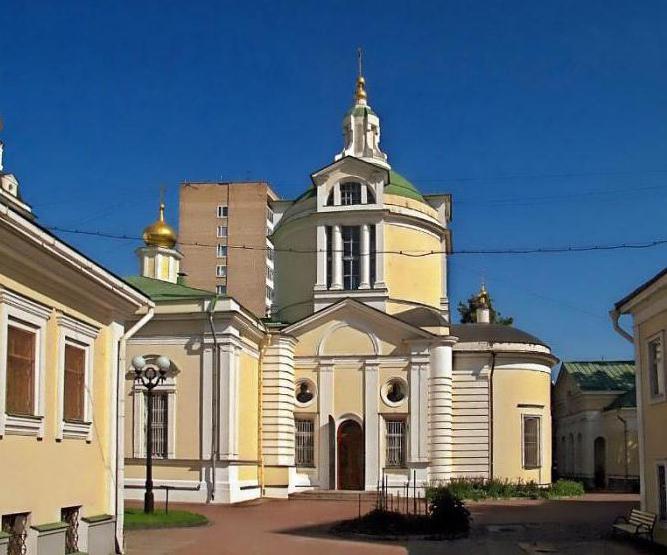In the very center of Zamoskvorechye there is an ancient and unusually cozy church that did not close during the whole year of atheistic hard times. It is popularly known as the Church of St. Nicholas the Wonderworker in the Blacksmiths. No books were written about the history of its creation, and most of the information was collected by members of the religious fraternity organized within its walls. Here is a little of what we managed to learn.
Blacksmith Settlement
At the end of the 15th century, the family of blacksmiths, inhabitants of the Blacksmithing Village that had been there since time immemorial, moved to the Zamoskvorechye region because of Yauza. They founded a new settlement with the same name, for which a plot was allocated in the area of the current Vishnyakovsky lane.
Well, since an Orthodox person cannot do without the Grace of God, they immediately erected a church called Novokuznetsk. It was located exactly where the temple of St. Nicholas the Wonderworker in Kuznets stands today, and the voice of her bell sometimes merged with the sound of numerous anvils.
The predecessors of the current temple
There is practically no information about the monastery, and the only mention of the church built by the blacksmiths in their new settlement is found among the documents of the Patriarchal Order dated 1625. But they only communicate its name and the fact that this temple of God was wooden, like most buildings of that time.
The church stood until 1683, giving way to a new stone temple. Whether it burned down in the fires of the fires that so often visited Moscow, or the god-loving residents of the capital city deliberately dismantled it, making room for a more solid and durable building - is unknown. But it was only with a patriarchal blessing that a church was built, which stood for one hundred twenty-two years, and on the site of which, in 1805, a new, preserved and still well-known Muscovite temple of St. Nicholas the Wonderworker in Kuznets was laid.
Holy patron saint and patron
It is not surprising that the main throne of the new temple was consecrated in honor of this particular saint, who is known for his patronage to both traveling people and widows, orphans, prisoners and other people who have an unenviable destiny in life. And since there were always plenty of such people in Russia, important gentlemen who went on a long voyage went to ringing his bells, and erratic, reckless copper revered for happiness.
The unique and peculiar appearance of the temple
Church of St. Nicholas in the Kuznetsk settlement acquired its current appearance after the reconstruction, carried out in 1847. Then an additional third tier of the bell tower was added, and the refectory, the central part of the church, in which general services were held, was slightly increased.
The name of the architect who created the temple project is unknown, but for a number of signs it can be assumed that this was one of the students of the famous Russian architect M.F. Kazakova. His school is indicated, in particular, by strict and laconic wall planes made in accordance with the canons of classicism, a powerful apse - an oval protrusion of the western facade, which houses the altar room, a spherical dome called the "rotundal", and a powerful light drum on which it set.
In general, according to its architectural solution, the temple is a vivid example of the Empire style. Relief images of the holy evangelists placed in round niches located above the northern and southern entrances, as well as the image of St. Nicholas executed in mosaic technique, placed on the apse, succinctly fit into its appearance. An undoubted find of the architect was the combination of the sunny color of the main parts of the building with the whiteness of the elements of its decorative decoration.
The Church of St. Nicholas the Wonderworker in Kuznets is also distinguished by the special brevity and simplicity of its interior. In them, the architect managed to achieve the effect of an imperceptible flow of walls to the base of the dome drum, which creates the impression of openness and spaciousness. This sensation is enhanced by a stream of light pouring from the large triple windows of the drum and filling the refectory and side limits. The iconostasis, shining with gilding of stucco decorations, especially wins in its rays.
The center of spiritual life
During the years of the divine struggle, elevated to the rank of official state ideology, the general campaign to close the churches bypassed the church of St. Nicholas. The history of her service to God and people was not interrupted throughout the long period of domination of godless power. The temple not only remained a non-fading hotbed of spiritual life, but also was a refuge for many shrines brought into it from closed Moscow churches.

Nowadays, when people woke up from an atheistic dope, churches again became the property of the religious communities around them. Together with them, continues the service of God and people to the church of St. Nicholas the Wonderworker in the Blacksmiths. The schedule of services held in it hardly differs from the schedule of services in other metropolitan churches. Traditionally, on weekdays in the morning they start at 8:00 and then continue at 17:00. The exception is Sundays and holidays, when the Divine Liturgy is performed twice - early at 7:00 and late at 9:30.
Clergy of the temple and the most active members of his community are constantly conducting extensive spiritual and educational work among parishioners. In particular, in recent years, in addition to the Sunday school that existed earlier, the Orthodox Gymnasium began to operate, in which students, along with the study of general subjects, spend a lot of time on the Holy History and the Catechism.